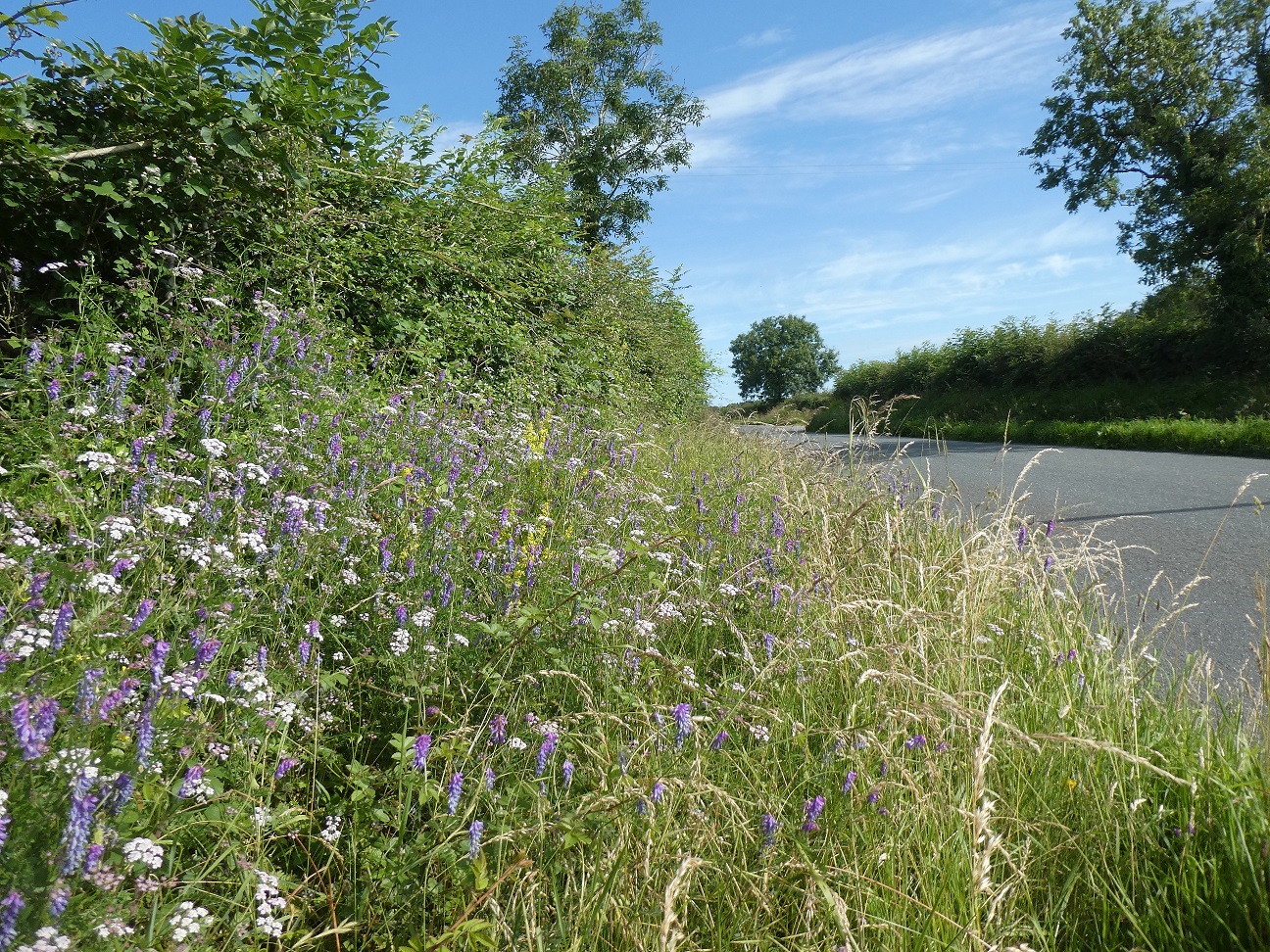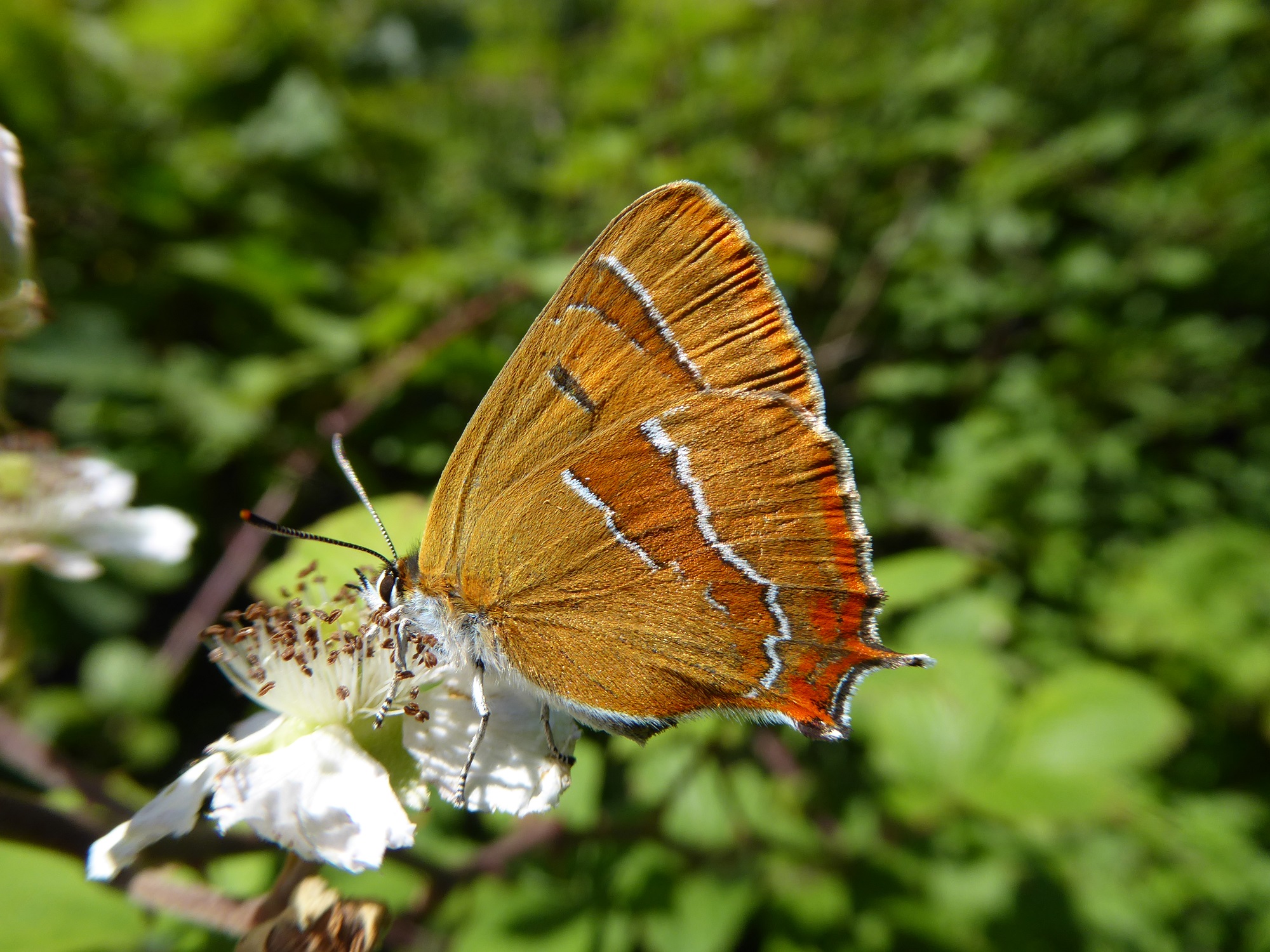This week will have unsettled weather with plenty of cloud and rain. These conditions do not allow our longest-lived butterfly, the Brimstone, to emerge from its over-wintering quarters to begin its breeding cycle. Late in March is typically when it emerges to seek mates, feed and begin to look for breeding plants.
The Brimstone has one generation a year. In Ireland and Britain, eggs are laid during spring and early summer on two small native trees, Purging Buckthorn and Alder Buckthorn. Purging Buckthorn is found mainly on rocky ground in the midlands and west of Ireland, but also on fen peat on cutaway bogs and in hedges on lime-rich soils. Alder Buckthorn occurs mainly on boggy soils, especially in alkaline peat on cutover bogs and fens, in and at the edge of bog woodland, on moist heaths and limestone pavement. Both plants occur together in some places, such as in and at the edge of turloughs in the west of Ireland, notable in the Burren.
These trees have a highly localised distribution in Ireland with Alder Buckthorn much the rarer of the two plants. The only region where these tree species are relatively abundant is the Burren, in County Clare and Galway, the only area in Ireland where the Brimstone is plentiful. Elsewhere, the Brimstone occurs in scattered locations mainly across the midlands. The butterfly does not occur in Northern Ireland, the northwest, or the southeast and is very rare in the east and southwest. The butterfly breeds only where its breeding plants occur but it does not occur in every place its larval foodplants are found.
After mating and laying eggs in spring and early summer, the adults die off, but quite slowly, with some surviving as late as early July. During July and August, the new generation is emerging as adult butterflies, but unlike most of our butterflies, they do not breed until the following spring after hibernation is complete.
So how does the Brimstone deal with several months when breeding is impossible, when the weather is unsuitable, and food is unavailable?
The article looks at how the Brimstone manages to survive adverse conditions and why it appears to be more numerous in spring after hibernation than it was during the previous summer.
The Brimstone, unlike most of our butterflies, is sexually immature when it hatches from the pupa. A reproductive diapause occurs in this butterfly. Diapause is the suspension of development or activity in any life stage of a butterfly. This strategy is used to survive months of unsuitable weather which often corresponds with the period during which its breeding plants are unsuitable. Diapause is a rest period undertaken by butterflies, moths and other insects with a seasonal life cycle.
Diapause aligns the butterfly’s complete life cycle to seasonal changes in the environment to ensure that further development occurs in the most suitable conditions. Diapause is controlled by the neuro-endocrine system (hormones released by the nervous system). Furthermore, it is genetically determined for each species and once initiated, it is not influenced by surrounding climate developments, even when these are favourable for development. Diapause usually occurs in response to environmental stimuli that precede unfavourable conditions, such as declining hours of daylight (Nash et al. 2012).
In the case of the Brimstone, diapause occurs in the winged butterfly and takes the form of delayed sexual maturity. This is likely an adaptation to the coldest months of the year and the condition of the foodplants from July to April. Between July and October, buckthorn leaves are tougher than they are in April-June and perhaps contain toxins making them unsuitable for the larvae. In March and well into April, leaves have yet to appear on the plants.
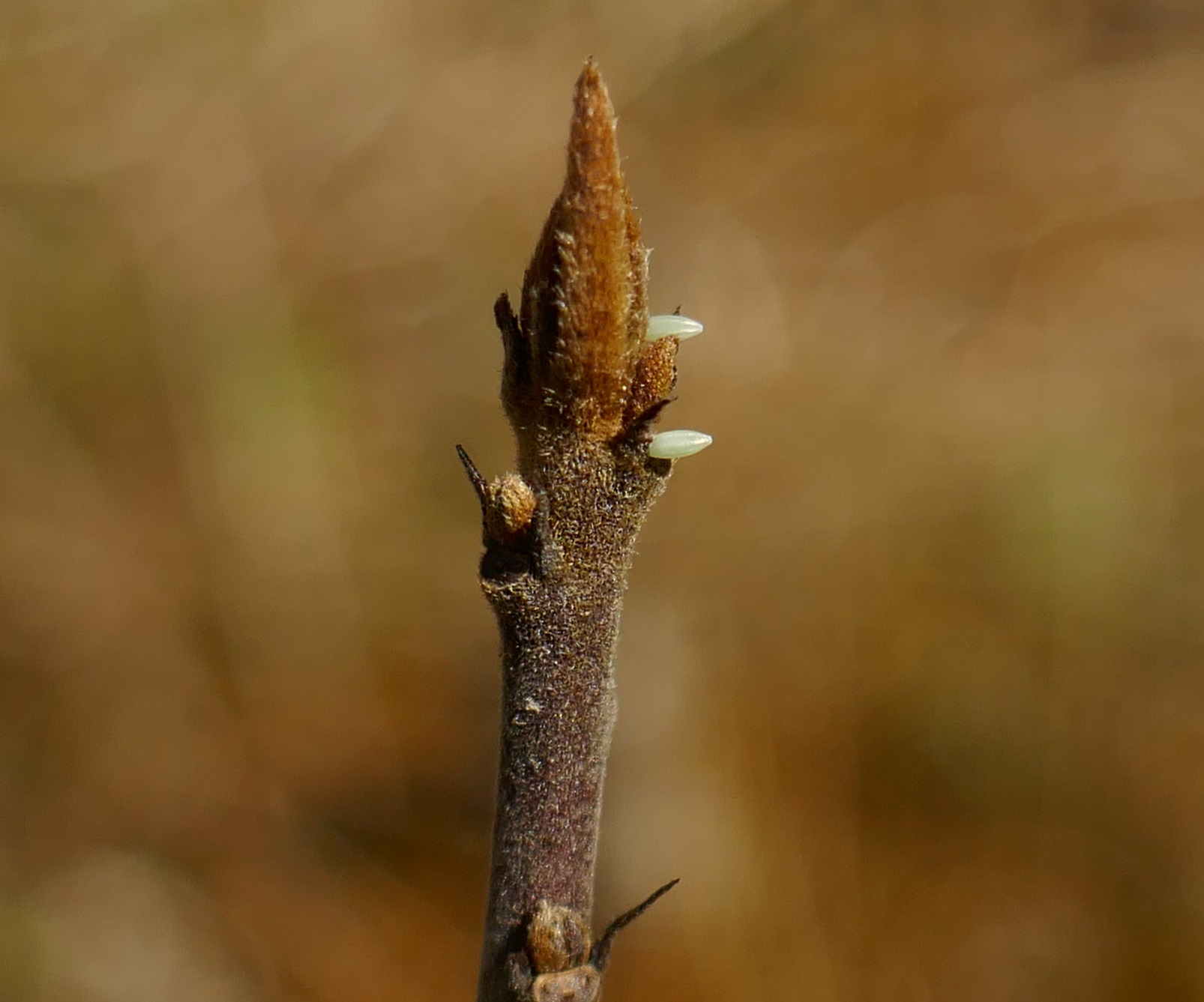
In males, sperm develops during summer and autumn but the duct through which sperm passes during mating is narrow and contains few sperm before hibernation, but the duct is swollen and filled with sperm after hibernation. Female Brimstones hatch without developed eggs (which are small, unyolked and without an outer membrane), and these are fully developed only after the females spend several warm days on the wing in spring after hibernation.
Given that males are sexually mature immediately after emerging from hibernation, males immediately seek mates. However, females do not begin emergence at the same time as males. The males spend several days on the wing before the first females appear.
This mismatch in emergence is not unusual in Ireland’s butterflies. In most if not all our butterflies, males emerge first. What is the advantage of this pattern of earlier male emergence?
The advantage is that the females are located quickly and mated, and they can concentrate on laying their eggs. In most of our butterflies, females hatch from their pupae with fully developed eggs so laying starts soon after mating.
But the female Brimstone is not ready to lay her eggs on emerging from her pupa or even after several months of life, including for a period in spring after hibernation.
Yet there must be an advantage for male Brimstones to emerge earlier from hibernation. What this might be, appears to be unknown. Here are some possibilities. Female Brimstones, it appears, mate once, while males certainly mate with as many receptive females as possible. It might be an advantage for males to emerge earlier to seek females, including females that have yet to emerge from hibernation. The earlier the male emerges, the more mating opportunities he has.
Furthermore, it is possible that the older he is, the more fertile he becomes. It has been shown that the male Monarch butterfly Danaus plexippus older males produce a higher ejaculate mass, which means females receive more nutrients from older males, increasing female reproductive productivity (Wicklund et al. 1996).
Are there advantages for female Brimstones of earlier male emergence? It is possible that male Brimstones may be sensitive to pheromones released by other males during mating. This might mean that recently mated females are less attractive and less likely to be courted by males, allowing these females to develop and lay their eggs without the inconvenience of male harassment and the dangers associated with prolonged, conspicuous male attention, which must draw attention from birds and other animals.
An advantage for later female emergence is that the foodplants have extra time to develop. In March, neither of its foodplants is in leaf so food is unavailable for the caterpillar. By the time females are ready to lay, the leaves are further on in their growth, although the leaves are often unavailable until well into April. In cool spring conditions, eggs take longer to hatch, and this delay should help the larvae to appear when the leaves are available. It is important that newly hatched larvae have young, tender leaves, so synchronizing emergence, egg development, mating and egg laying with the development of the foodplant is very important.
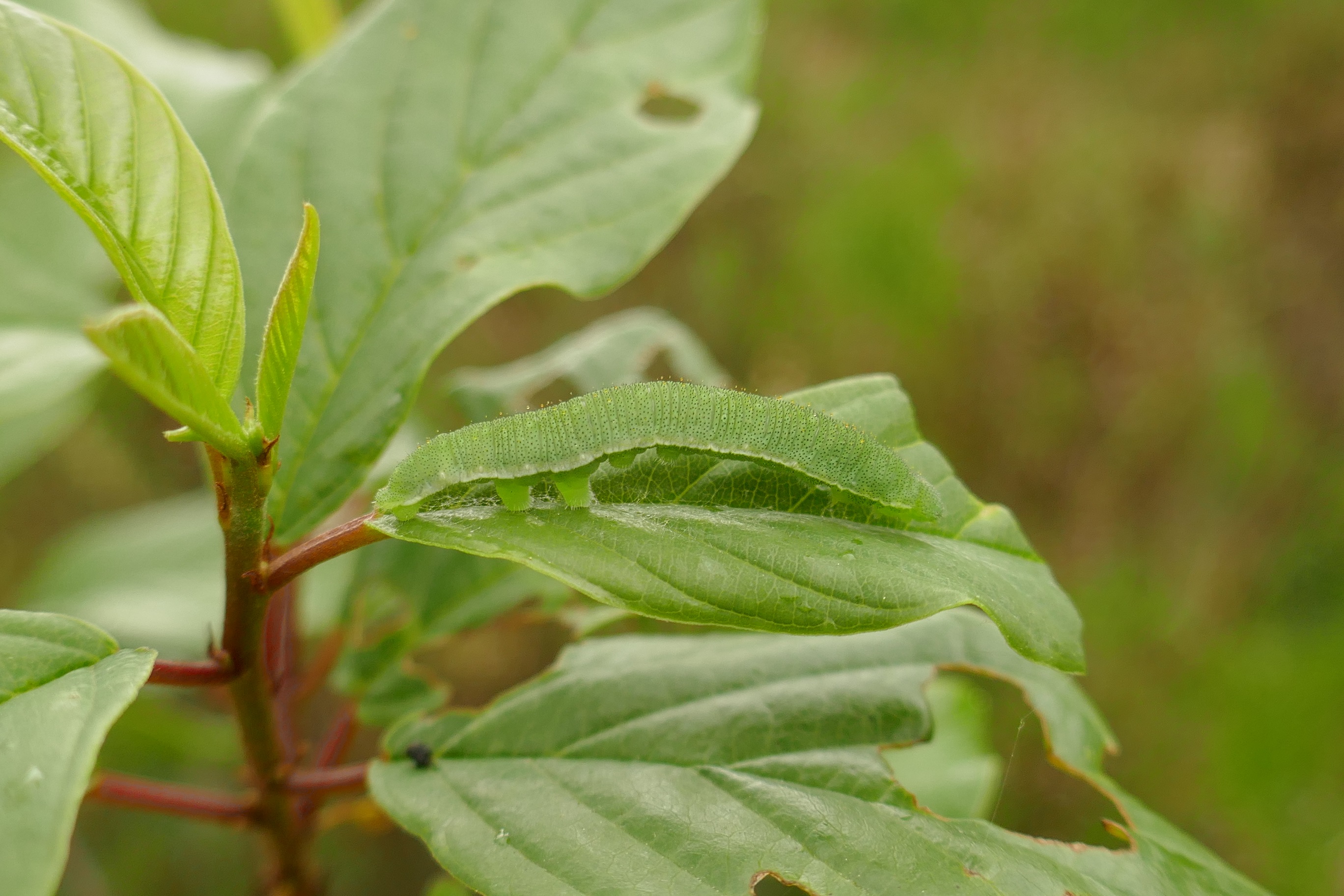
Before adult butterflies hibernate, they must feed on nectar (and, in some species, fruit, and tree sap) to build reserves to survive the colder months without food. However, the Brimstone butterfly shows some surprising results. Release and recapture experiments in Sweden show that wild Brimstones put on weight within one or two weeks of first being caught but that when caught later weight did not increase but was maintained at a steady rate. Despite males having to devote resources to developing their reproductive system over winter males have not been observed to feed more than females before hibernation. It might be expected that having to devote resources to reproduction over the winter would reduce male survival rates. However, both sexes have similar winter survival rates (Wicklund et al. 1996). As far as I know, this has not been explained.
The Brimstone shows other unusual characteristics. A study carried out in central Spain during the period 2006 to 2012 looked at uphill and downhill migrations of the Brimstone. These movements are influenced by the resource needs of the butterfly at different times of the year and by temperature during the summer, in this case, the need to avoid extreme heat downhill. One aspect that surprised the researchers was the abundance of over-wintering Brimstones was higher than it had been the previous summer because the numbers must decrease during hibernation (some die of starvation, and some are eaten).
It is ecologically impossible that the population of a single-brooded over-wintering butterfly is higher in spring than in the previous summer before it over-wintered. The researchers rule out the possibility of immigration boosting abundance (the Brimstone is not a migrant) and state that the reason is unknown but it may be linked with differences in behaviour in summer and the following spring. They state that “reduced summer activity could also make (it) difficult to quantify potential downhill movement in late summer” (Gutiérrez, D., & Wilson, R. J. 2014)
While the Brimstone will behave differently under the climatic conditions in a mountainous region in central Spain and in a lowland area in Ireland, it is possible that the researchers miss an important detail about the Brimstone’s behaviour during the summer.
I have often been struck, as have others, by the often excellent condition of Brimstones in March and early April. Some individuals look pristine, very few have faded and tattered individuals are very rare. How is it possible that a butterfly can be active from July to late September and still present in excellent condition the following spring?
Intriguingly, Brimstones do self-care rather well. During the first few days after they hatch from the pupa, the butterfly is quite sedentary. It sits quietly in bushes or trees and does not draw attention to itself. It does not bask with its wings open but sits with leaf-like venated undersides on show, blending with ambient vegetation. In hot or cold summer weather, it takes to cover in foliage, concealed to great effect. On summer days when it is active, it is rarely out of cover before 11 am or after 4 pm, roosting early, sometimes before that that, reducing exposure time.
Brimstones are very good at not getting caught by the onset of bad weather. They are rarely seen away from sheltering trees, bushes, ivy, or dense sedge clumps, and react quickly to changes in weather. Brimstones can forecast rain, even when it is sunny, and will take cover in advance of rainfall (Adrian Hoskins, pers. com.). They know the difference between a cloudy spell and a lengthy period of overcast conditions; a feeding Brimstone will rest on vegetation during a cloudy spell and go to roost during persistent dull weather (Harding, 2021).
The butterfly’s general behaviour is quite conservative. While it can fly at a strong pace, it usually flutters from bloom to bloom in summer, avoiding the need for lengthy or conspicuous flights. It does not fling itself into tangled vegetation at any time of the year like some species do when mate-seeking or egg-laying.
The Brimstone cleans itself, using its legs to remove dust and debris from its head and thorax, and unhooks its proboscis to remove sticky pollen.
Despite these behavioral traits, a delicate insect is expected to show wear and tear after months of active living. Their generally good condition in early spring is a key reason why I do not believe the Brimstone spends several months in an active state before entering hibernation. While records show that the new generation of the Brimstone is active from July to late September or even early October, my transect records which extend over more than 10 years suggest that individuals are active for a few weeks and that most enter hibernation during the summer. The timing of over-wintering is likely dependent on when it hatched from the pupa and the weather.
Brimstone eggs are laid over several weeks, from late March to mid-June. Therefore, adult butterflies emerge from the pupa over an extended period. If a Brimstone hatched at the beginning of July it is probably in hibernation before the end of the month. If it hatches early in August it is likely to over-winter before the month is over. Prolonged bad weather during summer will see pupae lasting longer and adults resting in cover until conditions favour hatching from the pupa and feeding on flowers. If correct, this would explain why Brimstones are often seen during September, especially following a wet August. Finally, it makes no sense for a butterfly to expose itself to danger for months, especially when it is not in breeding condition.
Thus, perhaps there is no time during most Irish summers when one sees most Brimstones that reside in an area. However, in spring when all Brimstones are in the adult state there is a mass emergence from hibernation which in spring sees them concentrated in their often-discrete breeding grounds rather than dispersed across larger areas of flower-rich habitats. In the early stages of good spring weather, most of those seen are males but soon the females appear; the sexes are very active in spring, intent on finding mates and breeding plants. This behaviour makes counting large numbers easier, but the butterfly is not more abundant in spring than it was the previous summer before over-wintering.
However, the large concentration of these large, bright, characterful butterflies on bright sunny spring days is exhilarating after the drudgery of our muddy, damp, drab winter. The daffodil yellow males’ dash along the wood, hedge, and scrub edges brings vitality and pure joy to the nature lover, while the pale females delicate fluttering around buckthorns evoke living blossoms, their glowing leaf-like wings translucently petal-like in the crystal spring sunshine. Little wonder people see their first Brimstone as announcing the beginning of spring; little wonder English naturalist Matthew Oates called this mass emergence phenomenon, “National Brimstone Lift-off Day, the first truly warm day of the year”(Oates, In Pursuit of Butterflies, p. 220). It must be warm and sunny to tempt the Brimstone out in spring so when you see it, you know the weather offers the promise of happiness.
While the Brimstone offers the fascination of investigation, discovery, and ongoing inquiry, it offers much else besides, a view of a flower-rich countryside in the finest weather. The Brimstone is our ultimate sunshine butterfly, especially when back-sunlit wings are enjoyed. The male turns suddenly from matt yellow to gold in such light, inspiring for anyone, particularly for a photographer seeking to preserve the memory of a perfect experience, when the moment literally turns golden.
Look out for this moment in the weeks ahead…
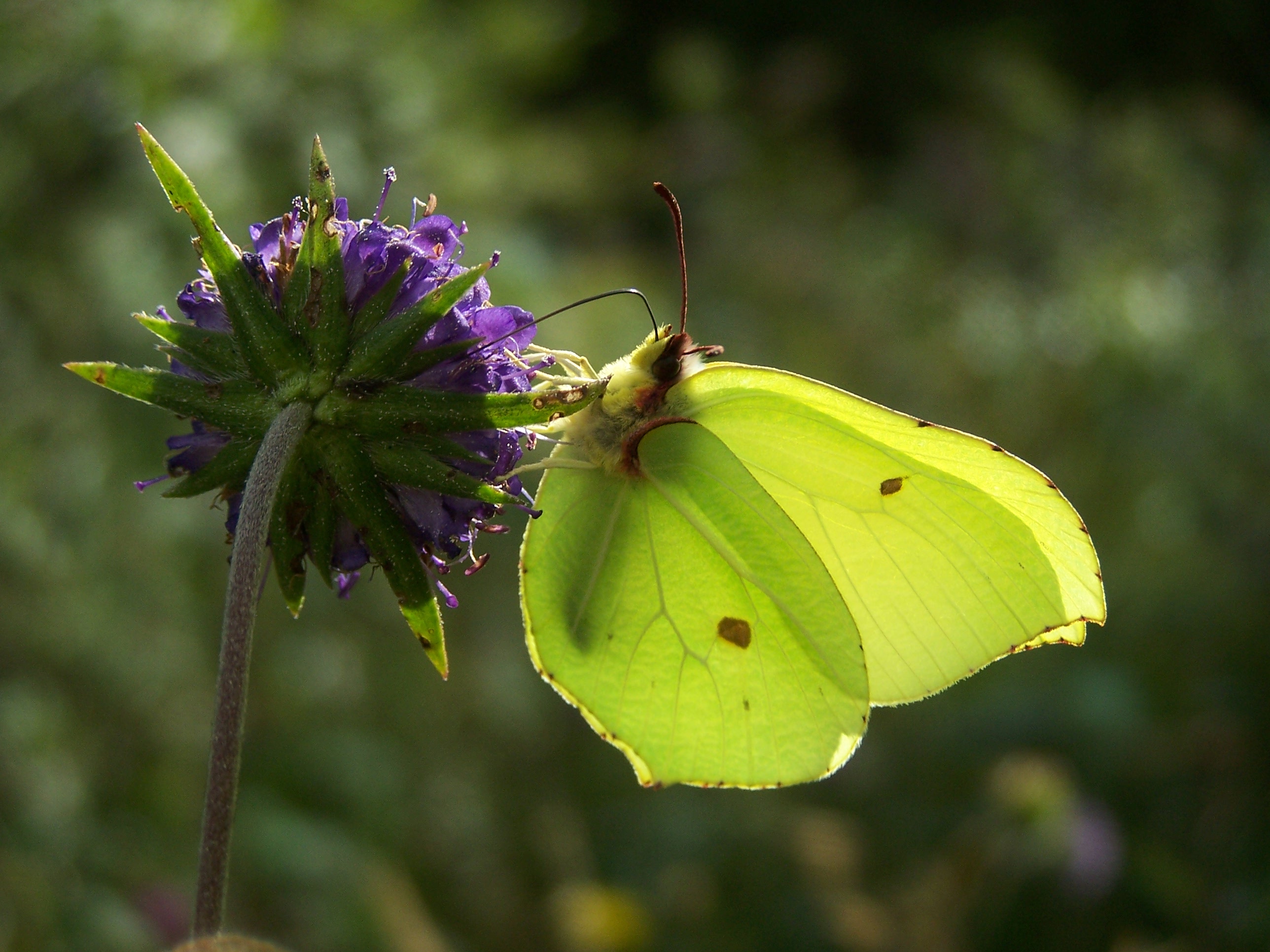
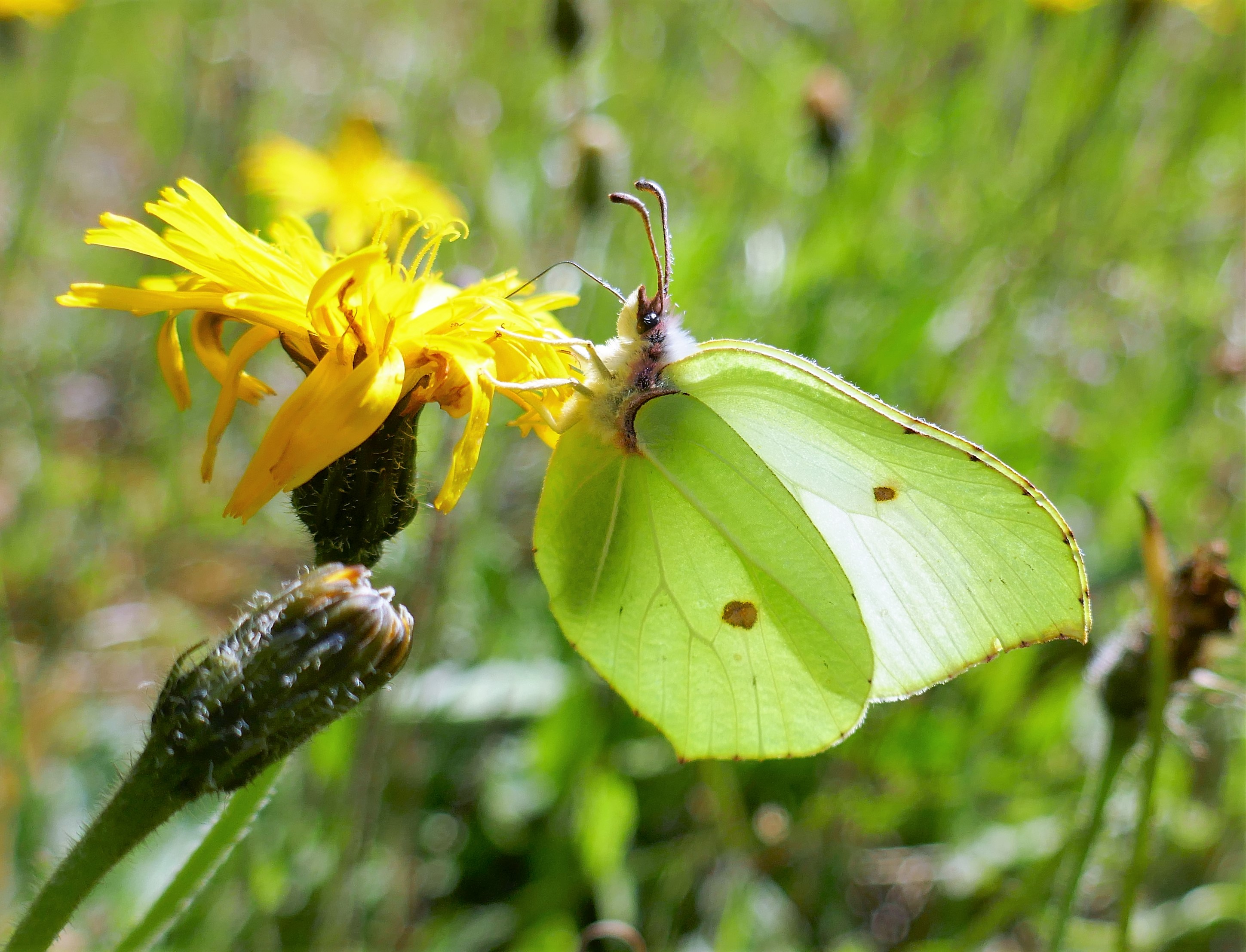
References
Gutiérrez, D., & Wilson, R. J. (2014) Climate conditions and resource availability drive return elevational migrations in a single-brooded insect. Oecologia, 175(3), 861–873. doi:10.1007/s00442-014-2952-4
Harding, J. (2021) The Irish Butterfly Book. Privately published, Maynooth.
Learnaboutbutterflies.com
Nash, D., Boyd, T. and Hardiman, D. (2012) Ireland’s Butterflies a review. Dublin Naturalists’ Field Club, Dublin.
Nelson, B., and Thompson, R. (2006) The Butterflies and Moths of Northern Ireland. National Museums Northern Ireland, Belfast.
Oates, M. (2015) In Pursuit of Butterflies. Bloomsbury, New York.
Wiklund, C., Lindfors, V., & Forsberg, J. (1996) Early Male Emergence and Reproductive Phenology of the Adult Overwintering Butterfly Gonepteryx rhamni in Sweden. Oikos, 75(2), 227. doi:10.2307/3546246


